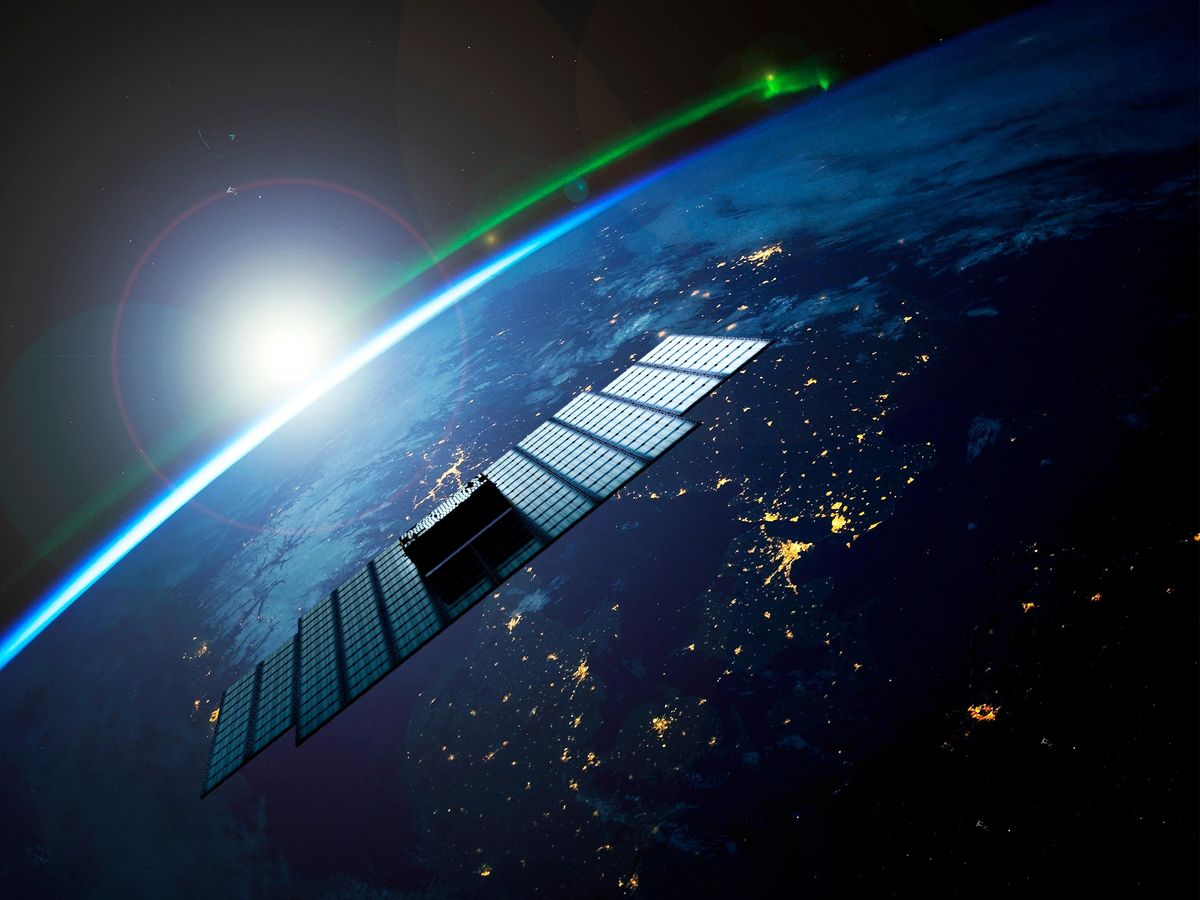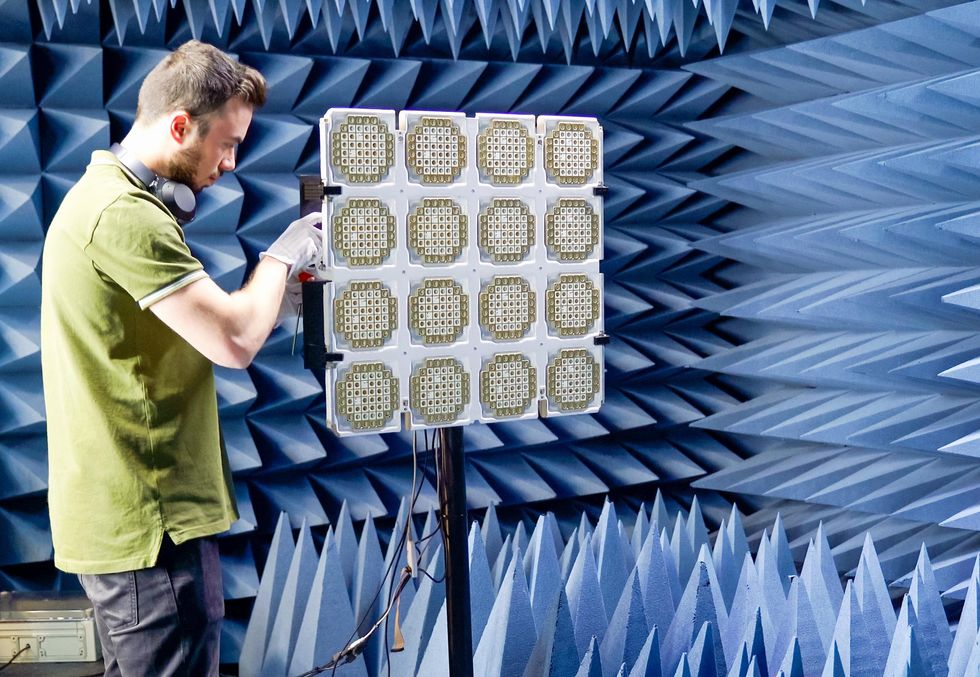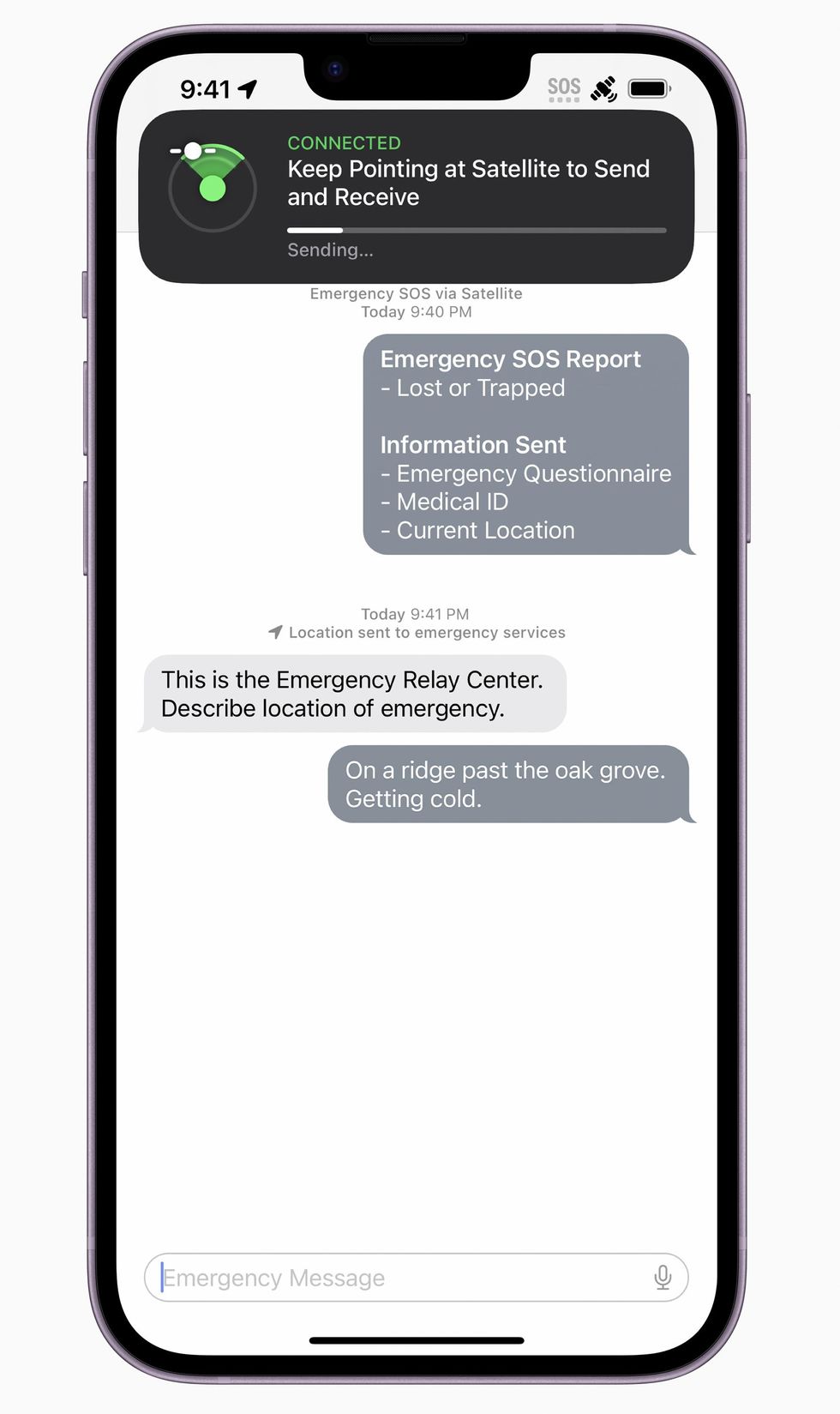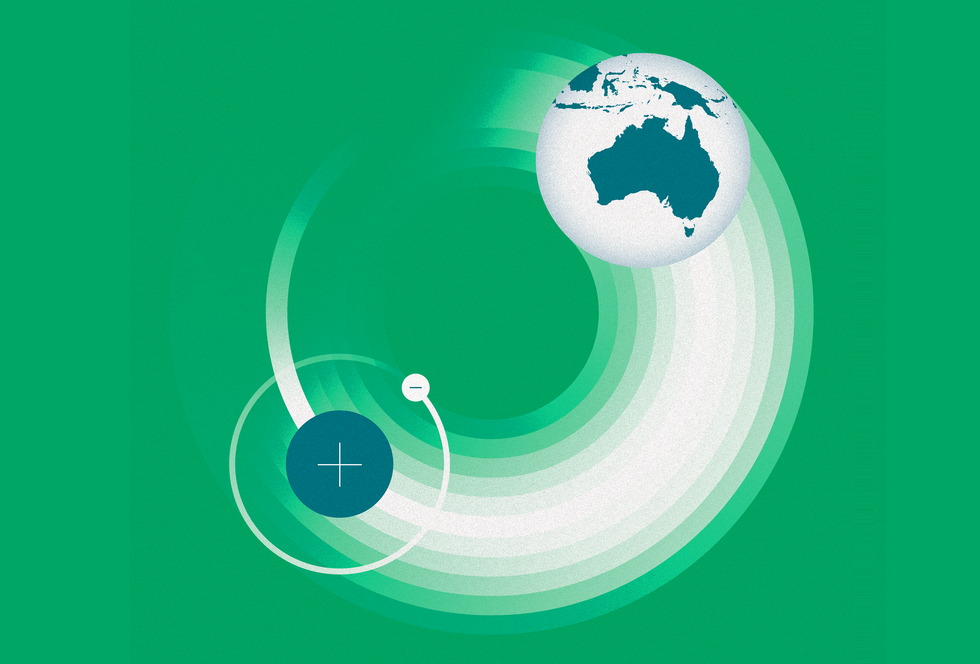Your Cellphone Will Be a Satphone
Existing smartphones will connect with new satellite constellations in 2023

This rendering of AST SpaceMobile’s BlueWalker 3 test satellite, launched on 10 September 2022, shows the satellite’s appearance when the antennas are fully deployed. The antennas’ surface area—64 square meters—enables the satellite to function as a long-distance cell tower for phones on Earth’s surface.
In 2023, you or someone you know will be able to send a text message through space. Late in 2022, hardware behemoths Huawei and Apple released cellular telephones capable of texting on traditional satellite-communications networks. A pair of ambitious startups, AST SpaceMobile and Lynk Global, also started building new low Earth orbit (LEO) satellite networks designed to reach conventional 5G cellphones outside terrestrial coverage.
“Offering direct satellite access to smartphones without modifications would allow access to billions of devices worldwide,” says Symeon Chatzinotas, the head of the University of Luxembourg’s SigCom research group.
Users looking to connect via satellite won’t need the bulky, expensive commercial satphones that have been available since the late 1990s—but they also won’t have conventional calling or high-bandwidth data streaming just yet. Satellite connections are still plenty useful, though. To begin with, people could use texting to signal for help if need be, no matter where they are, as long as they have a clear view of the sky. That is, their mobile phones will have capabilities similar to existing pocket devices like Garmin’s inReach communicator.
Huawei has not said when its service will begin working, but Apple’s partnership with Globalstar, dubbed Emergency SOS via satellite, has been operational since November 2022. As of this writing, Lynk Global has agreements with 23 telecom providers to begin commercial operations in 2023. AST SpaceMobile says it plans to launch its first five commercial satellites late in 2023, has agreements or understandings with more than 25 telecom providers around the world, and should begin commercial operations in 2024.

Splashy announcements of satellite-cellular connectivity from Apple, Starlink, and T-Mobile in the third quarter of 2022 promoted the idea of anywhere, any-kind connectivity. The first services won’t be that slick, though. Apple and Huawei will both connect initially to older satellites in higher orbits, for which it could take more than 10 minutes to establish a connection. Even the newer LEO networks, such as Lynk Global’s, currently advertise satellite texting but are not yet promising the higher-capacity link that a voice or video call would require.
AST SpaceMobile says that as the company adds satellites, it will be up to its mobile-network-operator (MNO) partners to decide whether to market the bandwidth in small increments to many users for texting or voice-only calls or to offer data-heavy services to select users. Lynk doesn’t mind its competitors’ aspirational advertising campaigns, says Lynk Global CEO Charles Miller: “They educated the market. It’s only going to make people want more.”
The tech that’s moving cell towers into space

These new offerings are possible thanks to a handful of advances that are now maturing. Advances include the declining cost of satellite manufacturing and the shrinking size of satellites themselves, making it affordable to build many more satellites than in the past. And with many more of them, it’s possible to put the satellites into lower orbits, between 300 to 600 kilometers above Earth, where each covers less ground. But closer satellites allow handsets with less power to reach them.
Another improvement is in software-defined radios—chips that can transmit and receive on different wavelengths modulated by software running aboard the satellite. In the past, sending and receiving such a wide range of different wavelengths required distinct hardware. Digital signal processing enables these chips to do the work of a complicated array of hardware. “Software-defined radio means the phased-array antennas can do frequency hopping as we switch from country to country,” Miller says. That technology makes it viable to pack more antenna capability into less space—Lynk will start with relatively small 1-square-meter antennas, but it plans to install bigger, more effective ones on its satellites in the future.
AST SpaceMobile chief strategy officer Scott Wisniewski says larger antennas are a big part of AST’s strategy: “We think that’s very important to communicate with low-power, low-signal-strength phones.” AST plans to deploy antennas up to around 400 m2, which would be the largest commercial telecom arrays in LEO.
| Satellites Deployed by End of 2023 | Planned Constellation Size | Orbital Height of Constellation | Constellation Completion Date | Size of Individual Satellites | |
|---|---|---|---|---|---|
| AST SpaceMobile | 5 Block 1 Bluebirds | ~170 satellites | 550-700 km | First commercial service in 2024 | Block 1 Bluebirds: Block 2 Bluebirds: 128 m2 antennas |
| Lynk Global | 12 satellites | 5,110 satellites | 500 km | 2027 | First generation: Second generation: |
Even so, having phones communicate with satellites rather than cell towers is tricky because of the much larger signal delays. “Everything about a phone is built around time-synching on the order of 5 to 10 milliseconds,” Wisniewski says. “That works just fine with a tower that’s a quarter mile away, 3 miles away even, but not for orbit.” AST is developing hardware solutions with Nokia and Rakuten that tell the core network how to wait longer for satellite signals.
In 2023, Apple and Huawei will be testing how much use they can get from older communications satellites through their flagship handsets, equipped with new chips. Meanwhile, if things go according to Lynk Global’s plan, by spring of 2023 the company will be offering commercial service to its MNO partners. AST may have its first commercial satellites in space but would still be testing and configuring them.
Network operators “historically asked ‘How is this possible?’” Wisniewski says. “Lately it’s more about ‘How can we use this best, when can we use this, what’s the best market strategy for each market?’” For people living in certain countries, 2023 could be the year when they are no longer troubled by the words “No Service.”
This article appears in the January 2023 print issue as “No More ‘No Service.’”

Top Tech 2023
Top Tech 2023: A Special Report
Preview exciting technical developments for the coming year.
Can This Company Dominate Green Hydrogen?
Fortescue will need more electricity-generating capacity than France.
Pathfinder 1 could herald a new era for zeppelins
A New Way to Speed Up Computing
Blue microLEDs bring optical fiber to the processor.
The Personal-Use eVTOL Is (Almost) Here
Opener’s BlackFly is a pulp-fiction fever dream with wings.
Baidu Will Make an Autonomous EV
Its partnership with Geely aims at full self-driving mode.
China Builds New Breeder Reactors
The power plants could also make weapons-grade plutonium.
Economics Drives a Ray-Gun Resurgence
Lasers should be cheap enough to use against drones.
A Cryptocurrency for the Masses or a Universal ID?
What Worldcoin’s killer app will be is not yet clear.
The company’s Condor chip will boast more than 1,000 qubits.
Vagus-nerve stimulation promises to help treat autoimmune disorders.
New satellites can connect directly to your phone.
The E.U.’s first exascale supercomputer will be built in Germany.
A dozen more tech milestones to watch for in 2023.
- UbiquitiLink Wants To Turn Every Cellphone Into a Satellite Phone ›
- Apple Kicks Off the Cell-Calls-From-Space Race ›
- None ›
- Civilian Satellites Descend Into Very Low Earth Orbit - IEEE Spectrum ›
- How Satellites Are Becoming the New Cellphone Towers - IEEE Spectrum ›


